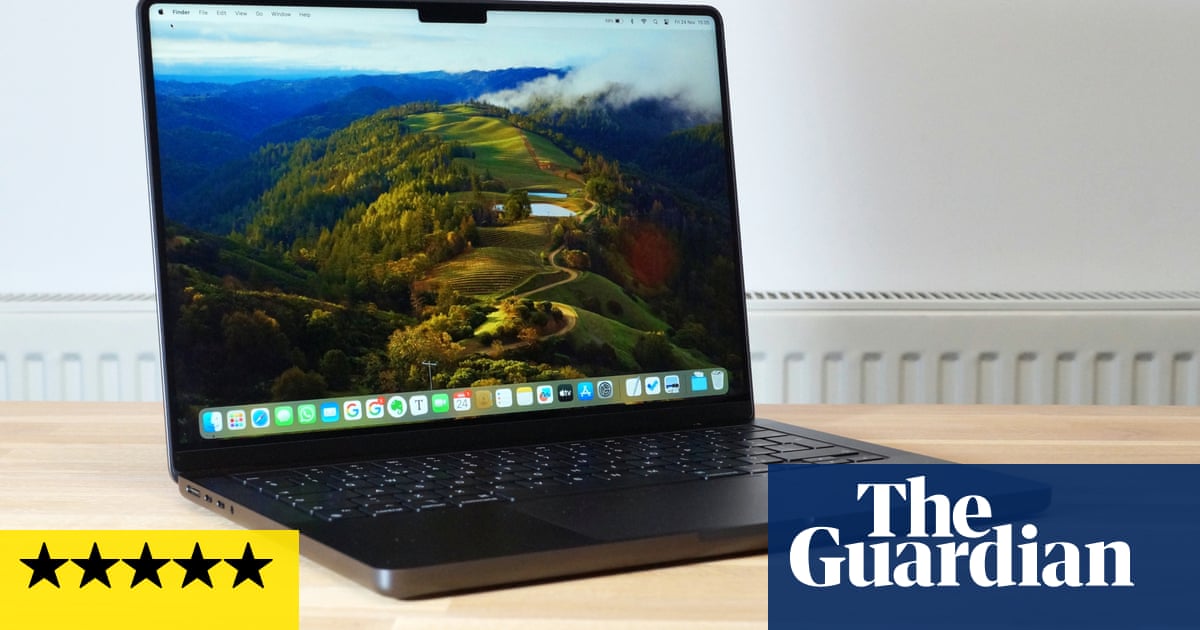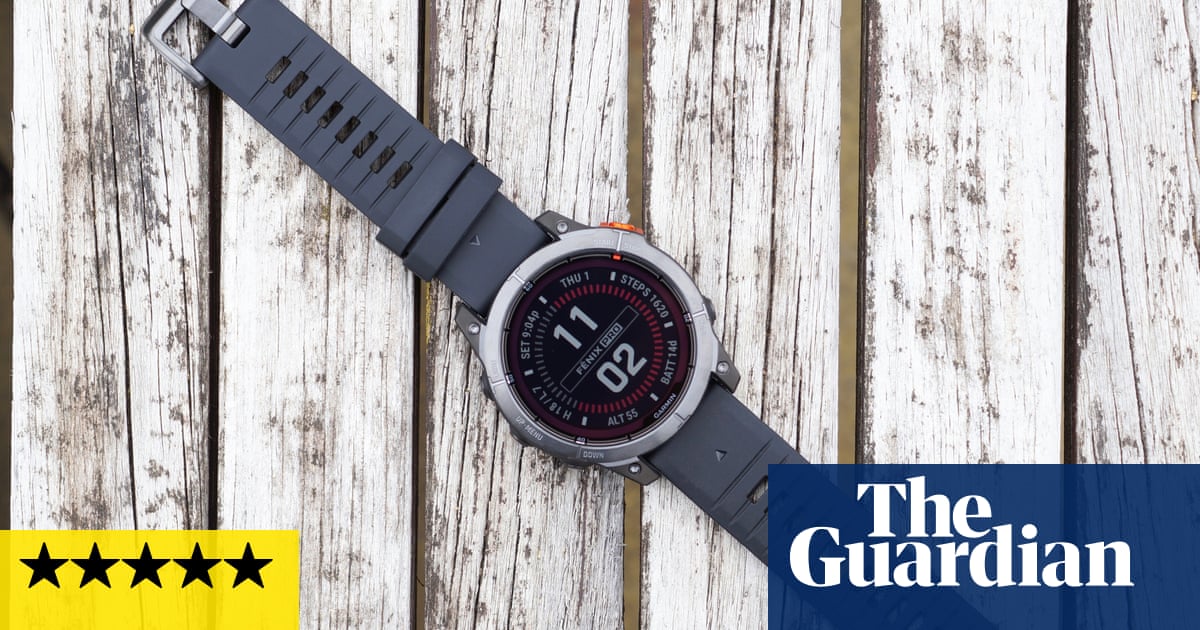
The 2020 13in MacBook Pro is the last of Apple’s laptops to get its new and improved keyboard, banishing various issues to the rear view mirror and essentially perfecting this current design.
Despite both sharing the same name, the 2020 13in MacBook Pro is split into two lines: a cheaper version starting at £1,299 with two USB-C/Thunderbolt 3 ports and older eighth-generation Intel chips; and a more powerful version starting at £1,799 with four USB-C/Thunderbolt 3 ports and the latest 10th-generation Intel chips.
It is the latter machine reviewed here but both two and four-port machines share the same design, including screen, keyboard and trackpad, leaving processing power and connectivity the differentiators.
Apple has kept the laptop’s design more or less the same since 2016 when the Touch Bar was introduced. The 2020 13in MacBook Pro is the same height and width, but 0.7mm thicker and 30g heavier to accommodate the new keyboard, a compromise entirely worth it.
The 13.3in screen is still one of the very best on the market. Bright and beautiful, it covers a wider colour gamut than most competitors. It’s crisp enough, despite competition with other higher resolution screens that are slightly larger thanks to thinner bezels.
The keyboard
The new bit is the Magic Keyboard, which is Apple’s name for the more traditional scissor-switch mechanism that replaces the issue-prone butterfly keyboard. It’s the same keyboard as the MacBook Air and 16in MacBook Pro and is just as good here.
It’s one of the best fitted to any laptop, coming very close to Microsoft’s best-in-class design. The keys feel good with a subtle doming, and the 1mm key-travel – the distance the key sinks when pressed – is enough to be satisfying while still being firm and stable.
The Touch Bar remains largely untouched. I’ve found it useful, particularly in Affinity Photo, where being able to change the brush size and other adjustments on-the-fly using a slider on the Touch Bar is a godsend.
If you were put off purely by the previous keyboard, you are now safe to buy a 13in MacBook Pro.
It’s also worth pointing out that Apple’s trackpads are unparalleled. Some other laptops have good, precise and large trackpads but nothing comes close to the precision, accuracy, size and utility of Apple’s force-sensing trackpads.
Specifications
Screen: 13.3in LCD 2560x1600 (227 ppi)
Processor: 8th or 10th-generation quad-core Intel Core i5 or i7
RAM: 8, 16 or 32GB
Storage: 256GB, 512GB, 1TB, 2TB or 4TB
Graphics: Intel Iris Plus 645 or G7
Operating system: macOS Catalina
Camera: 720p FaceTime HD camera
Connectivity: wifi ac, Bluetooth 5, USB-C, Thunderbolt 3, headphone
Dimensions: 212.4 x 304.1 x 15.6mm
Weight: 1.4kg
Power and long battery life
The four-port 13in MacBook Pro, tested with the 10th-generation Core i5 processor and 16GB of RAM, performs as you would expect from a top-spec machine.
Benchmarks place it as roughly 15% faster than the previous generation and the cheaper two-port machine with older chips. It handled complex image editing jobs in Affinity Photo, some 4K video editing and all general computing with ease.
The only power-feature missing is a dedicated graphics card, which is reserved for Apple’s top 16in model but that machine comes with a significant portability penalty compared to the 13in model.
One thing to note is that the laptop ran super cool. It was totally silent even while photo editing, only audible while doing really intensive tasks and when connected to power – not something that can be said for every machine. If you want a powerful but quiet machine, this is it.
Battery life was also surprisingly good lasting more than 9.5 hours with light usage, mainly browsing in Chrome and Reeder, email, instant messaging and writing duty with the brightness set to 75%. It lasted more than 7.5 hours when that workload also included two hours of photo editing.
For perspective, that’s well over an hour longer than the similar spec 2017 model and about the same as the entry-level MacBook Air with a dual-core Core i3 processor. It’s also longer than Huawei’s MateBook X Pro and Microsoft’s Surface Laptop 3.
The 13in MacBook Pro ships with a fairly beefy 61W USB-C charger, which hits 70% in an hour and fully charges the laptop in one hour 50 minutes.
It’s worth noting the 13in MacBook Pro lacks the latest wifi 6, only supporting the older wifi ac standard instead, and that the laptop doesn’t have any of the older USB-A ports or an integrated memory card reader.
Sustainability
The 13in MacBook Pro is one of the more sustainable laptops you can buy.
Unlike the MacBook Air, Apple does not provide charge-cycle rating for the battery for the MacBook Pro. The battery can replaced for £199 by Apple. MacOS Catalina 10.5.5 added a new battery health management system that prolongs the lifespan of the laptop’s battery by learning from your charge patterns and limiting the maximum charge capacity when it can.
The computer is generally repairable too, although the RAM and SSD chips are soldered in place.
The MacBook Pro uses 100% recycled tin in the solder of its logic board and at least 35% recycled plastic used in multiple components, but does not use recycled aluminium like the MacBook Air. Apple is also using renewable energy for final assembly of the machine, and breaks down the computer’s environmental impact in its report.
Apple also offers trade-in and free recycling schemes, including for non-Apple products.
MacOS Catalina
The 13in MacBook Pro ships with Apple’s latest macOS 10.15 Catalina, which introduced Sidecar, which instantly turns an iPad into a second screen for your Mac; Mac Catalyst, which helps developers such as Twitter port their iPad apps to the Mac; and splits iTunes into separate Apple TV, Music and Podcasts apps.
Overlapping lines
Ignoring the competition for a moment, with the 13in MacBook Pro split into two lines, Apple’s laptop lineup has intentional overlap. The top and bottom ends are clear, but things get a little muddled in the middle.
At the low end is the excellent MacBook Air starting at £999 with an Intel Core i3 processor, which is aimed at the general consumer for lighter, everyday tasks.
But the MacBook Air also has a 10th-gen Intel Core i5 version costing £1,299 that matches the starting price of the two-port 13in MacBook Pro with older eighth-gen Intel Core i5 chips. Here, Apple says, the choice is between portability with occasional power with the MacBook Air, and more sustained plugged-in performance on a relative budget with the MacBook Pro.
The four-port 13in MacBook Pro at £1,799 is a step up in both price and performance, and designed for intensive workloads, such as app development, video editing and other traditionally “Pro” things but with portability.
The large, 16in MacBook Pro sits atop the range starting at £2,399, which is Apple’s workstation laptop providing the most processing and graphics power with the best cooling solution for sustained at-desk work.
Observations
The speakers are really good for a laptop.
You can run the machine with the lid closed, making it suitable for slotting into docking stations akin to a desktop computer.
Having only two ports is very restrictive when used at a desk, when one is for power and the other for an external monitor.
Price
The 2020 13in MacBook Pro with two Thunderbolt 3 ports starts at £1,299 with an eighth-generation Intel Core i5 processor, 8GB of RAM and 256GB of storage.
The model with four Thunderbolt 3 ports starts at £1,799 with a 10th-generation Intel Core i5 processor, 16GB of RAM and 512GB of storage.
For comparison, the MacBook Air starts at an RRP of £999, the 16in MacBook Pro starts at £2,399, Microsoft’s Surface Laptop 3 starts at £999, Dell’s XPS 13 starts at £1,399 and Huawei’s MateBook X Pro starts at £1,299.
Verdict
The 2020 13in MacBook Pro is not one but two different products.
Both the two-port and four-port share Apple’s new keyboard, which is genuinely excellent, the fantastic trackpad, great screen and all the other premium, well-executed features.
But for most people, the cheaper two-port machine is bettered by the MacBook Air of a similar price. If you need more power, the four-port 13in MacBook Pro is the one to buy.
It has the 10th-gen Intel chips and twice the connectivity. It lasts a surprisingly long time when doing light office duties and longer than I expected when doing something intense.
It’s super quiet and will stay at peak performance for an extended period that’s longer than most competitors. But at £1,799 it’s also very expensive, partly because it ships with double the RAM and storage, with 16GB and 512GB respectively. These cost £400 as options on their own. Some £1,800 in the world of Windows 10 buys you an awful lot of laptop .
To make a better laptop than this Apple will have to radically redesign the machine, so this feels like the last great version of a long-running model. It’s not exciting, nor does it reinvent the wheel but it is great – the 13in MacBook Pro many have been waiting for.
Pros: great keyboard, escape key, inverted-T arrow keys, fantastic trackpad, long battery life, gorgeous screen, USB-C/Thunderbolt 3, Touch ID, sustainable materials
Cons: expensive, no card slot or legacy ports, no user-serviceable RAM or storage, no Face ID, decidedly average webcam, no wifi 6












